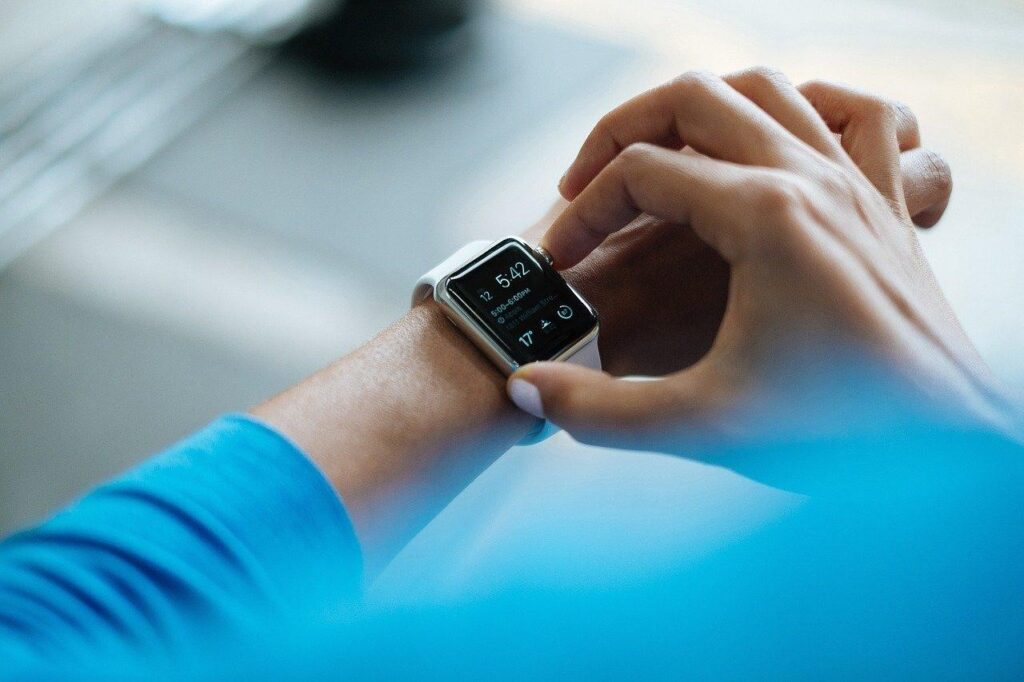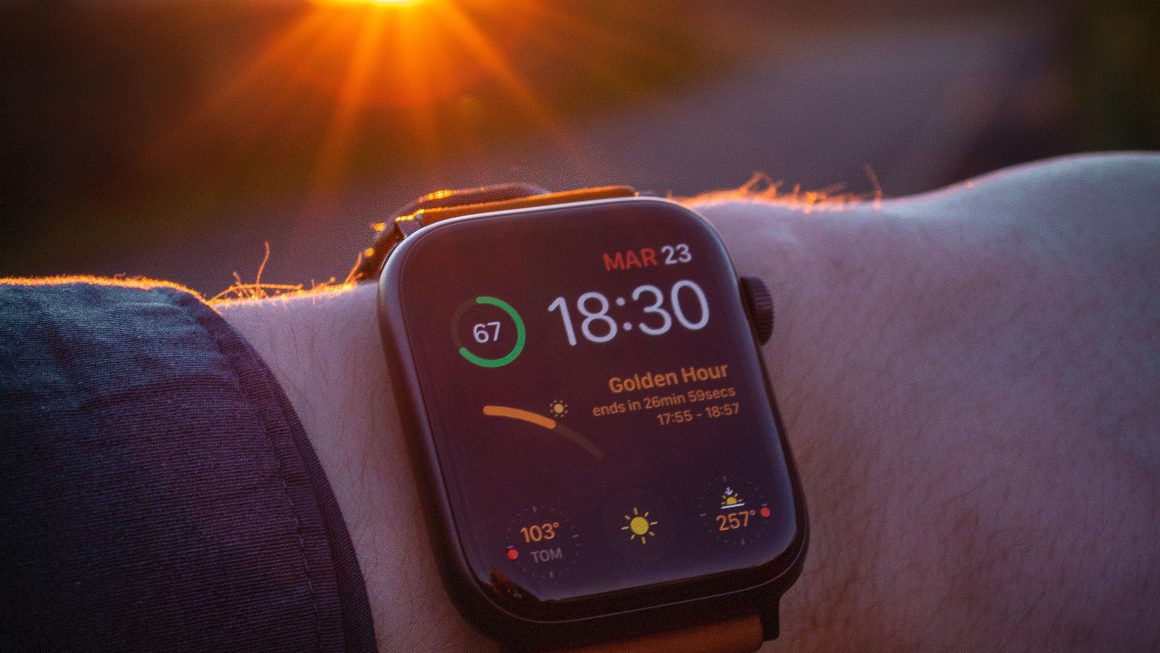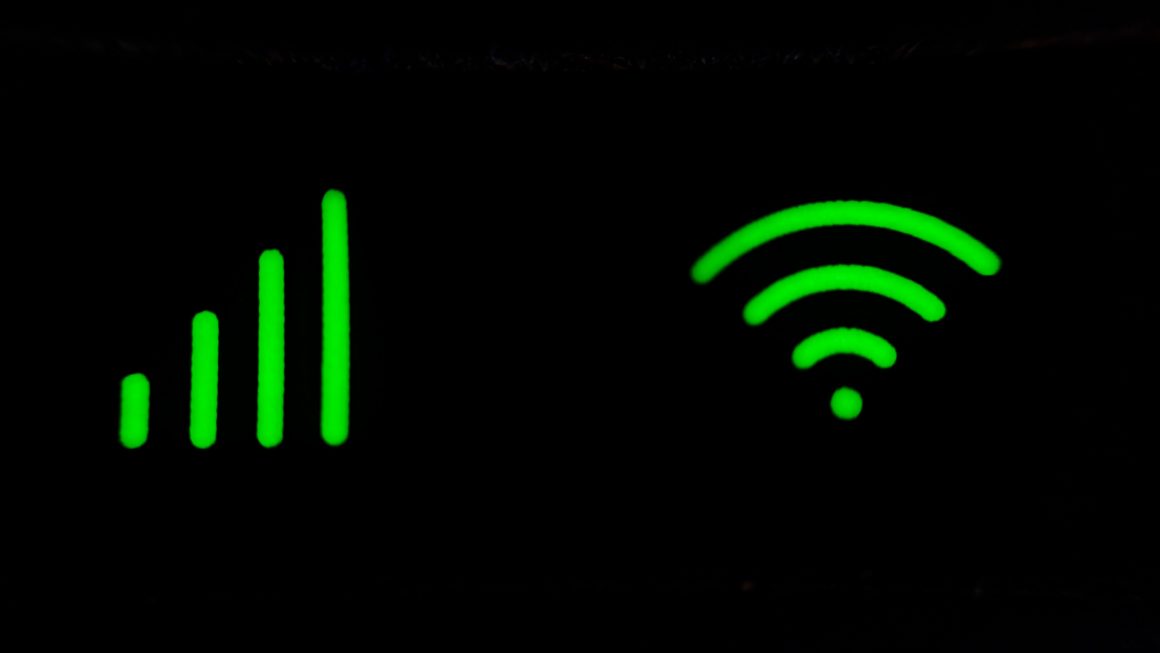Wearable gadgets continue to proliferate as researchers and engineers test the limits of technology. From medical diagnostic devices to devices to help workers maintain good posture, there will be a host of interesting gadgets to consider in 2020.
Five Types of Cool Wearable Gadgets
Smartwatches and fitness bracelets may continue to dominate the market, but VR gear is expanding to make simulations more immersive, and wearable sensors will continue to improve health care and how we work.

Medical Wearables
Innovative wearable technology will continue to emerge in the medical field the next year. Gadgets ranging from AI-powered vital sign monitors to sweat-analyzing patches are slated to hit the market or begin trials.
These devices will allow faster intervention and help detect disease with clever ways to sense changes in our bodies.
The sweat-detecting patch developed by researchers at Northwestern University is designed to give athletes and doctors a real-time monitor of their hydration and electrolyte levels during workouts and physicals. It works by absorbing the sweat from pores under the patch and measuring conductivity.
Another device takes this principle a step further to detect cancer cells circulating in a patient’s blood. Using an IV and a small device attached to a patient’s arm, researchers found that they could detect tumor cells to detect cancer. It’s being considered as a viable option to avoid invasive biopsy surgery.
Virtual Reality Wearables
Virtual reality wearables are getting more sophisticated, going beyond headsets and hand controls that have become the basic VR equipment.
VR headsets are also improving rapidly with sharper video feeds and a wider field of vision, but VR developers are adding more senses to the setup.
Sony has developed headphones that will synchronize audio with the visual experience of a VR simulation, and a full-body HoloSuit is in the works for next year.
The HoloSuit is based on the same motion capture technology worn by actors in movie productions. The jumpsuit has sensors placed at strategic points that are tracked by a camera to create a model in 3D software.
Applied to virtual reality applications, it will give users the ability to control their entire body inside 3D simulations and games.
Fitness Wearables
The fitness market is one segment where wearable technology has been widely adopted. The trend in this market will likely be refinements and added sensors.
Most fitness trackers rely on gyroscopic data to detect motion of your hand and arm to infer your physical activity. Other sensors like pulse monitors and ECG sensors will take these wearables to the next level.
We can expect to see more fitness trackers equipped with all three sensors to provide better analysis of our heart health and caloric burn.
Beyond improved sensors, fitness trackers will continue to experiment with how they’re worn, ranging from clip-on devices to ankle bracelets. One new product we’ll see next year will double as a watchband, allowing you to upgrade your low-tech timepiece.
Workplace Wearables
We’ve already seen fitness and health wearables repurposed to augment workplace wellness programs and track employee work patterns.
These trends will continue in 2020 with wearables designed specifically for these purposes.
Pocket HRMS is one example of a wearable-empowered HR application that will be marketed directly to human resources managers.
It will offer HR departments ways to collect fitness and activity data to help them tailor health programs, floor layouts, and even health insurance options for their workforce.
The wearable devices that collect employee data can include fitness bracelets, smartwatches, and clip-on trackers.
Industrial Wearables
New mobile and cloud technologies continue to revolutionize the industrial world, and best wearable gadgets are joining in to offer innovative ways to improve manufacturing operations.
Wearable devices can function as environmental sensors, locators for supervisors. And essential personnel, And even trainers for new employees learning to use tools.
One researcher at the University of Chicago has developed a wearable device that fits onto a user’s hands.
It uses sensors to detect hand motion and electrodes that can stimulate specific muscles. The researcher imagines it as a guide for learning motor skills with tools in the workplace.
When device detects tool in the user’s hand, it suggests how to handle by stimulating the appropriate hand muscles.
Final Thoughts
There’s no end to ideas that researchers and engineers can imagine that can give us better access to smart technology with wearable devices.
The real test continues to be whether these experimental devices are practical enough for consumers and businesses to adopt them.
That isn’t stopping the development of innovative concepts, however, which is evident from wide range of new best wearable gadgets. That we’ll see announced or introduced in 2020.
From specialized medical diagnostic gadgets to smart patches that read your sweat. Best wearable gadgets 2020 will offer more ways for technology to improve our lives.
Also Read: 10 Affordable Brand Digital Watches for Men to Buy




